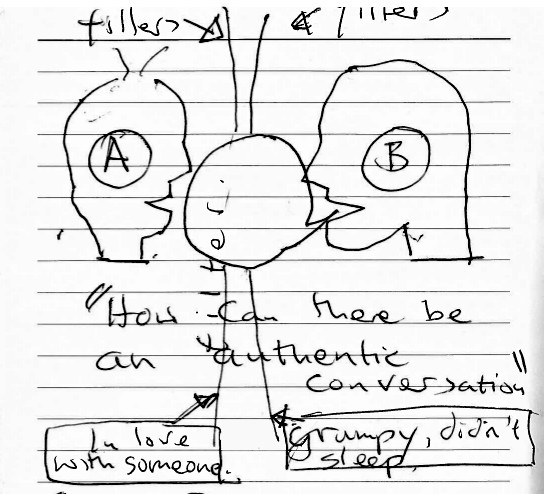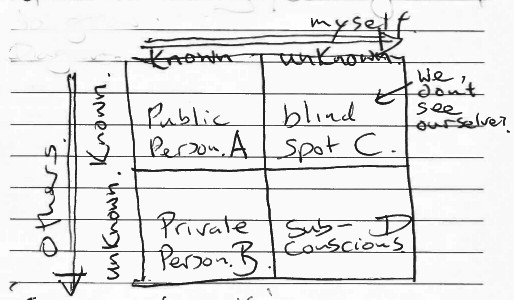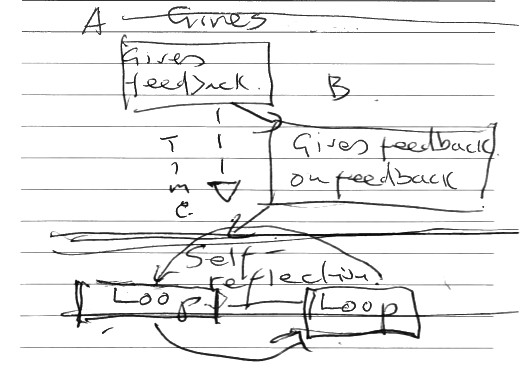This workshop was on Tuesday 25 July; part of Contact meets Contemporary 2017.
“That was great dancing. How did you do that?” – is an example of feedback, and feedback can make us better dancers. How do we feedback effectively?
A feedback machine is one where part of the output becomes part of the input. How a person’s behavior is ‘read’ or perceived by others becomes ‘feedback’. There is the idea in feedback of: feeding, eating, feeding-back. Giving nourishing food might help someone to grow, for example. Feeding forward is like kissing someone – kissing can be lots of things says Katrin.
Katrin shows a communication model (1955 American model) – diagram below – and references the book The Courage to Ask, by John Niland and Kate Daly, 2012.
Authentic conversation?
We need to be aware that there are filters in our communications with people which can change meaning – perhaps in a way which we didn’t intend. The way a person feels can act as a filter for example. How can we have an authentic conversation given these barriers – the filters?
Exercise
Lie on your side on the floor: think of how you feel about a situation. Katrin says: do that now, name it, let it go. This is self reflection:
Discussion
We discuss giving feedback at this dance festival especially with reference to this diagram:
- Be aware of your filters (in dancing contact improvisation).
- We can ask for feedback if none is given. At this festival, we can explore feedback.
- Ask for feedback!! e.g. movement restrictions or dance possilbilities
How to feedback
- Be appreciative.
- Start positive.
- (Elevator) For example: ‘I saw, it touched me that … I asked myself, I felt.
- Describe, be factual, be detailed.
- Don’t judge.
- Talking is one possibility (but there are others – dance?!)
Excercise
We work in a group of three people. One person is the ‘researcher’ and their job is to observe the other two people who are in a conversation. One of the two people dances, and the other looks the movement of their joints/limbs and gives feedback to the dancer at after the end of dance. The researcher says what they notice about the feedback. Feedback on the feedback!!
I take part in this exercise but the group doesn’t understand the task and we don’t complete it as required! There is no feedback!
Notes
Katrin’s website: www.wertstoff-buehne.de





